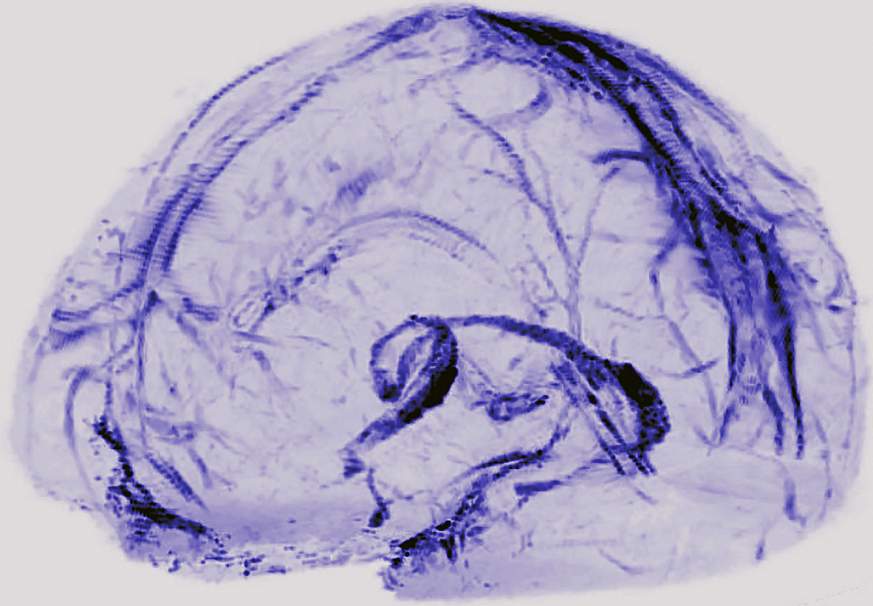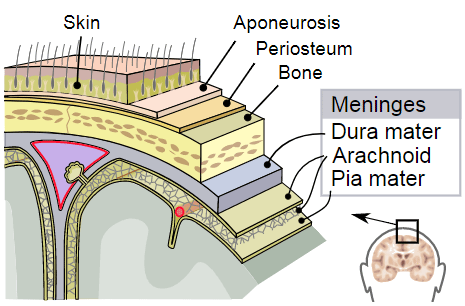In the human brain found the lymphatic system to remove waste

Brain drainage system. Magnetic resonance imaging of the brain of healthy participants in the experiment showed that the brain is capable of removing waste through the lymphatic vessels, a kind of sewage system in the human body.
Scientists have long suspected that the network of lymphatic vessels in the brain can be used to remove the results of vital activity. Studies have even shown in which position in the dream the waste is removed most effectively (lying on its side). In the brain, this network is located next to the blood vessels. In the 1990s, it was believed that only a small part of immune cells and cerebrospinal fluid enter this system. But recent studies have shown that, in fact, much more macromolecules and immune cells are removed from the brain through the drainage lymphatic system than was thought.
A group of American scientists from the National Institute of Neurological Disorders and Strokes, the National Cancer Institute and the University of Virginia for the first time provided direct evidence that waste from the brain is really removed through the lymphatic vessels, and not through the blood circulatory system. Moreover, they found a network of lymphatic vessels in the dura mater of the brain.
')
It is surprising that discoveries in the field of human anatomy continue to be made even now, in 2017.

Dura mater and other brain shells
It is believed that the withdrawal of waste from the brain is most active during sleep. At this time, the cerebrospinal fluid changes places with the intercellular fluid to remove waste from the lymphatic pathways in the same way that the lymphatic system removes waste from other organs of the body. Among the wastes in the brain are beta amyloids and tau proteins.
“We literally watched people's brain drain fluid into these vessels,” said Daniel S. Reich, senior researcher at the National Institute of Neurological Disorders and Strokes and lead author of scientific work. “We hope that our results will give new impetus to the research of various neurological diseases.”
Thanks to magnetic resonance imaging, researchers have found that lymphatic vessels are even in the dura mater. In fact, they are part of the circulatory system, because they are located along the blood vessels, but the lymphatic vessels carry the lymph, a colorless liquid that washes all the tissues and cells of the body, which contains immune cells and the above-mentioned wastes. Through the lymphatic vessels, the lymph is transported to the lymph nodes. The blood vessels to the lymph nodes receive white blood cells, through which the lymph nodes get rid of immune cells, launching them into repeated treatment. During this process, the immune system receives information whether a specific organ is under attack from viruses and bacteria, or if it is damaged. In other words, the lymphatic system acts as a link between the brain and the immune system.
It is curious that the lymphatic system in the brain was found back in 1816, but over the past two centuries, the discovery has somehow been forgotten. When in 2015 the lymphatic vessels were found in the dura mater of mice, it was a real surprise for the experts: “I was very surprised. At the medical institute we were taught that there is no lymphatic system in the brain, ”says Dr. Reich. After the discovery, he asked himself a question: what if the same system exists in the human brain?
During the experiment, gadobutrol, a paramagnetic contrast agent for magnetic resonance imaging, was injected into the circulatory system of five volunteers. It is usually used to identify damaged blood vessels. Gadobutrol molecules are small enough to leak from the blood vessels into the dura mater, but too large to cross the blood-brain barrier and enter other parts of the brain. After reconfiguring the apparatus for magnetic resonance imaging, researchers saw a bright and extensive network of lymphatic vessels in the solid membrane of the brain.

Moreover, a further study revealed a similar network of lymphatic vessels in the dura mater in other primates, not only in humans. This means that this system is the standard way to remove waste material from the brain. Obviously, failures in her work are associated with the emergence of various neurological diseases, so now scientists will have a new clue to more closely examine the causes and treatment options for these diseases.
The scientific article was published on October 3, 2017 in eLife magazine (doi: 10.7554 / eLife.29738).
Source: https://habr.com/ru/post/373867/
All Articles